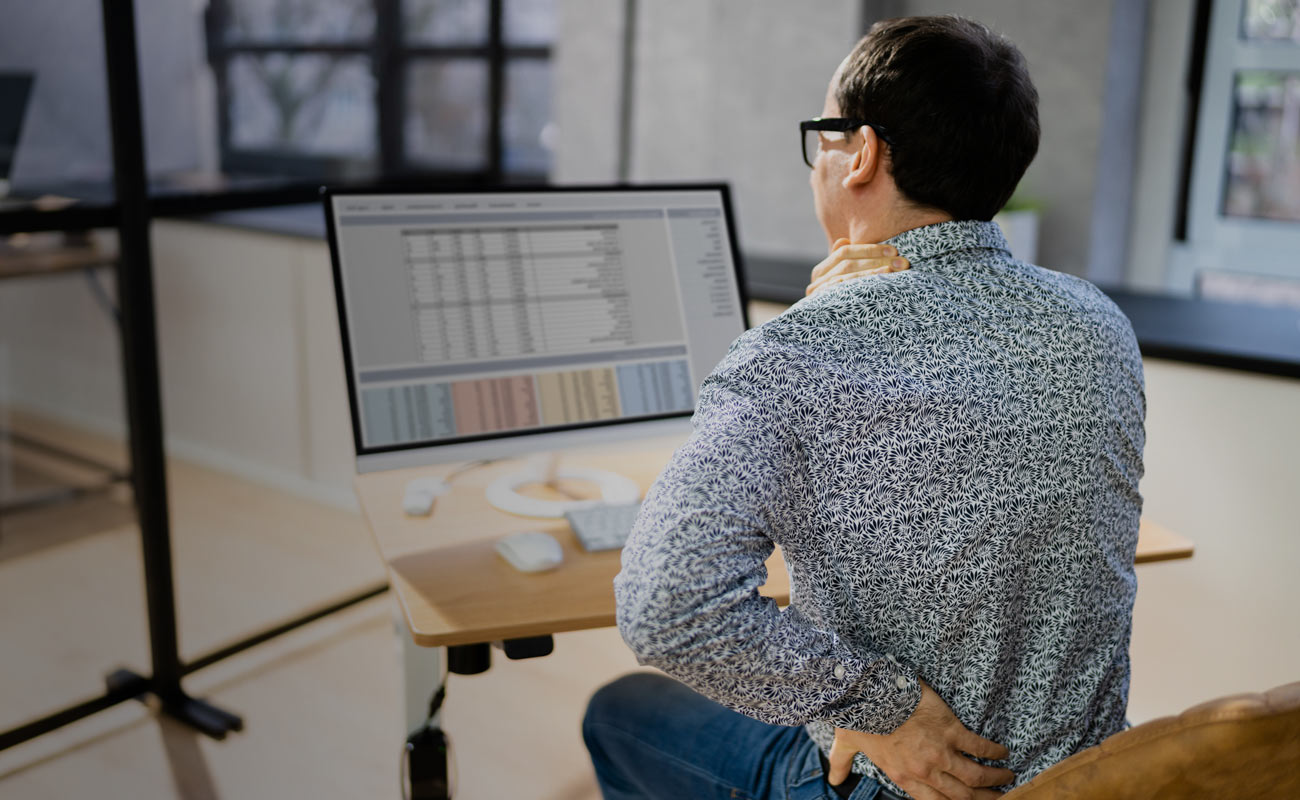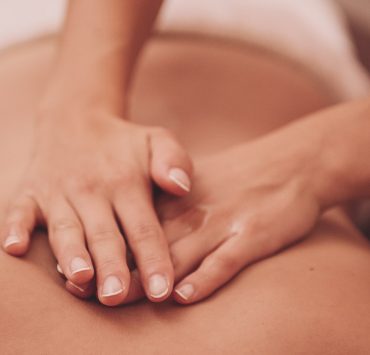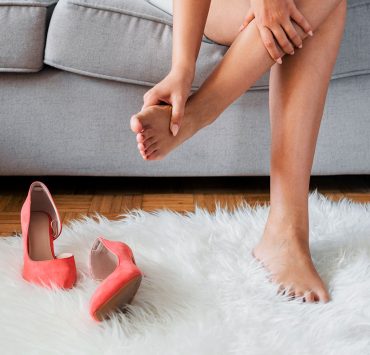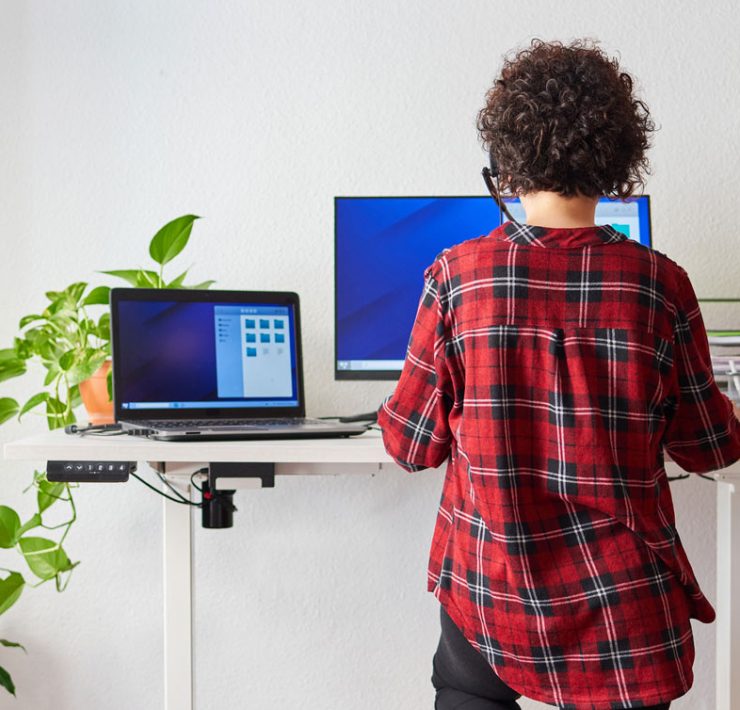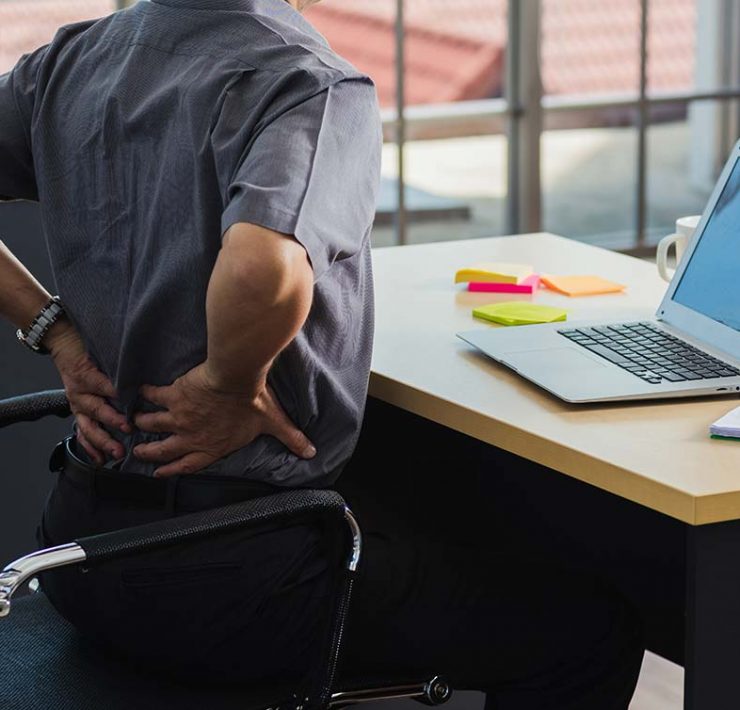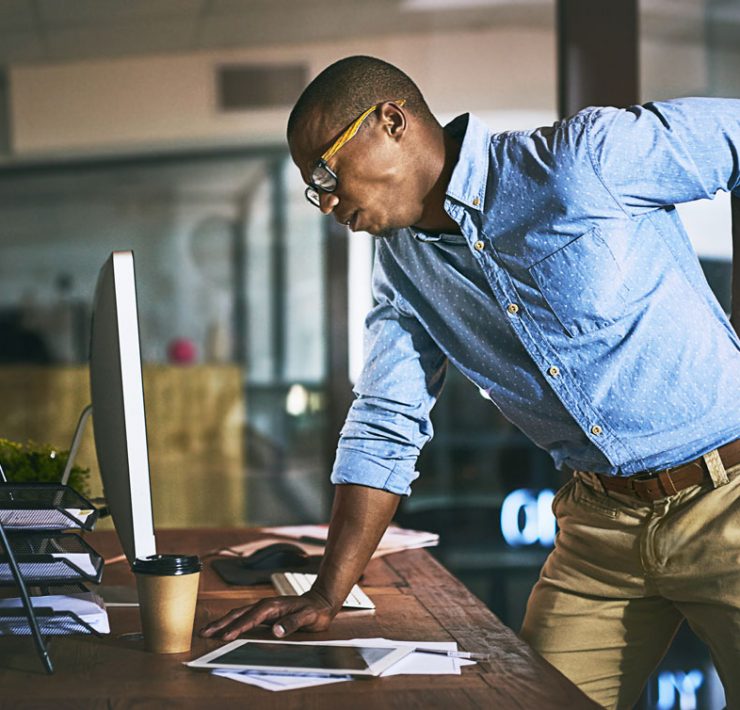“Sit up straight! Don’t slouch like that!”
Echos of your mother may still ring in your ear, especially if you’re chained to your computer or on your phone all day…every day. Unfortunately, Mom’s castigations may only last a minute or two before our typical, less-than-ideal posture takes back over. Even now, as you read this article, your likely perked-up posture will fade as other thoughts creep in.
Try as you might, you cannot think your way to better posture. There are actually more steps involved than just mentally reminding yourself to “sit up straight.”
What Does “Bad Posture” Really Mean?
First off, some muscle physiology. Muscles are capable of enormous adaptation. If you are a long-distance runner, you will have muscles more accustomed to running than you would if you were a competitive Olympic weightlifter. If you are a person who walks to work and arrives at a standing desk for the day, you will have muscles better attuned to that than someone with an hour-long car commute who sits at a desk all day.
Our muscles are remarkably efficient at their own fuel consumption—and adapt to burn the least amount of fuel necessary to accomplish the tasks they are asked to perform. In doing so, muscles may become longer or shorter, more relaxed or more taut. In massage terminology, muscles can become “stretch-weakened”—like a stretched-out rubber band, the muscles are weaker in a stretched state as opposed to in an ideal, more neutral position. On the opposite end of the spectrum, muscled can become “adaptively shortened”—meaning they are at rest in a shorter-than-ideal position.
If you think of a person with an exacerbated computer posture, you will see a hunched and rounded back, a head that is hovering over the keyboard, and arms in extreme flexion of the shoulder and elbow joints. In this image, the muscles across the back adapt to being longer than ideal—i.e. stretch-weakened—and the muscles of the chest and abdomen become shorter than ideal—i.e. adaptively shortened.
If you’ve developed this poor posture from a life of desk work (or couch work or kitchen table work), no matter how hard you think about it or how often you remind yourself to straighten up—your posture will not improve. You will need to take meaningful physiological action, which will likely include massage and could include physical therapy.
How Do Massage and Physical Therapy Improve Posture?
Massage generally works by encouraging muscles to reset at a longer length and a relaxed tonicity. Because of this, massage is perfect for addressing the adaptively shortened muscles of your body.
When booking a massage to address adaptively shortened muscles in your posture, you should specify that you have a need for a therapeutic massage. This means you have a specific physiological concern (shortened muscles) and are seeking a functional improvement through massage (re-lengthened muscles and improved posture). During the intake, you should discuss these concerns in detail with the massage therapist. The therapist will do a quick posture assessment on you, which will involve looking at how you hold yourself while you stand or walk. With that knowledge, they will then target the adaptively shortened muscles during your massage.
Unlike with adaptively shortened muscles, massage has little to no effect shortening stretch-weakened. Fortunately, this is where physical therapy can come into play. Physical therapy can help strengthen, and as a result progressively shorten, your stretch-weakened muscles.
Often, a single session with a massage therapist or a physical therapist can lead to an at-home program you can perform on your own and see real progress. In combination, massage and physical therapy can be a powerful force for getting your body back into a posture that you (and your mother) would be proud of.
What You Can Do When Massage and PT Aren’t Available
In between massage ot PT sessions. you can always improve the conditions that deteriorate your posture through yoga, strength and weight training, a stretch routine, or even some simple movements throughout the day. A certified trainer or instructor will be able to advise you on which poses or exercises can do the most good to improve your posture.
Note when stretching that you will only need to stretch the muscles that are adaptively shortened. If you stretch muscles that are already stretch-weakened, you will be working against the progress you’re trying to achieve!
Melanie Peddle holds a MS in Mechanical Engineering and has been practicing massage since 2012. She is an instructor with Western Colorado University in its partnership with the University of Colorado, focusing on biomechanical engineering and injury, as well as applications in adaptive sports. An accomplished collegiate athlete, Melanie brings an engineer's mind to all her physiological pursuits, and a passion for the most interesting engineering challenge of all: the human body.

